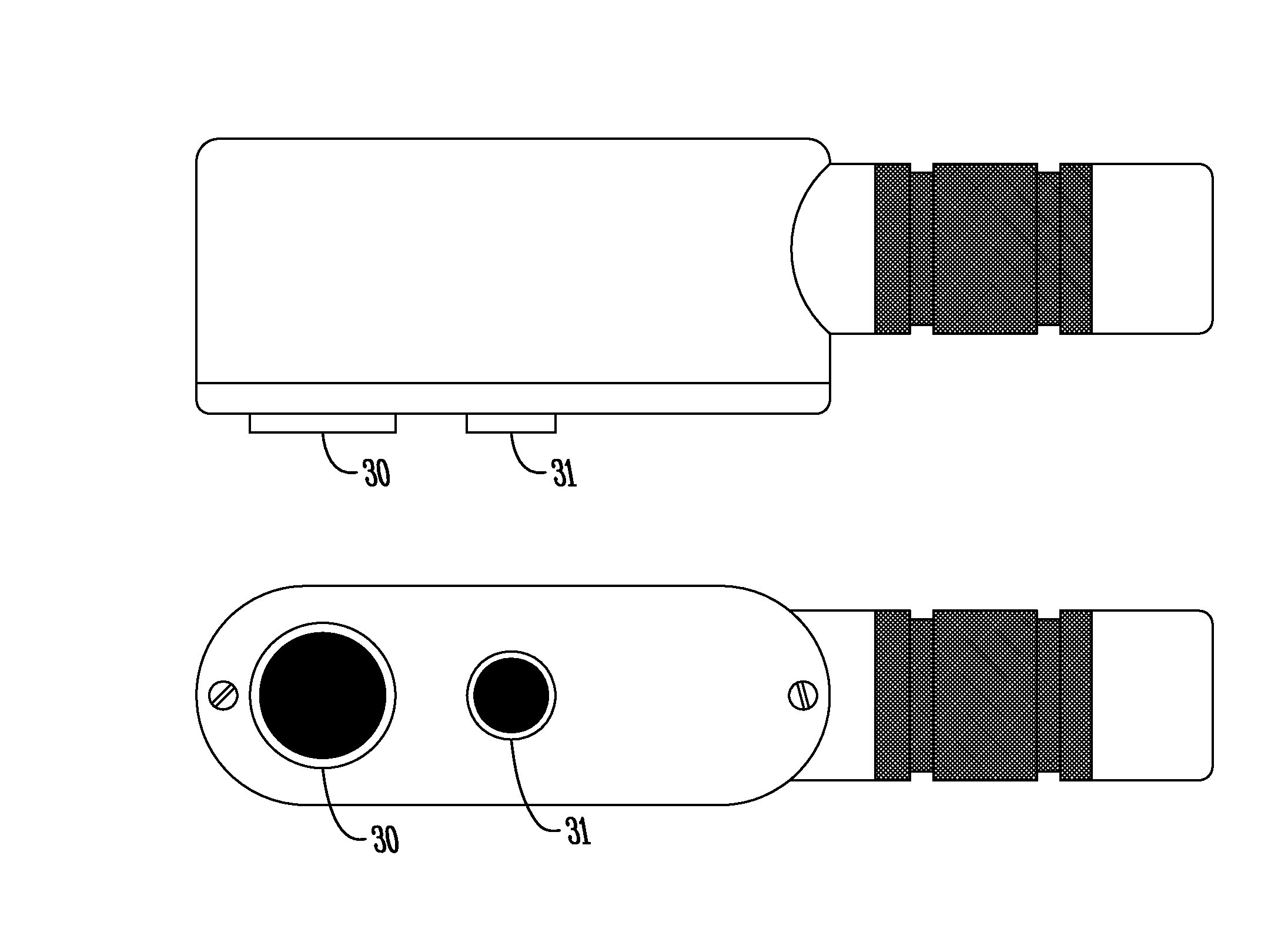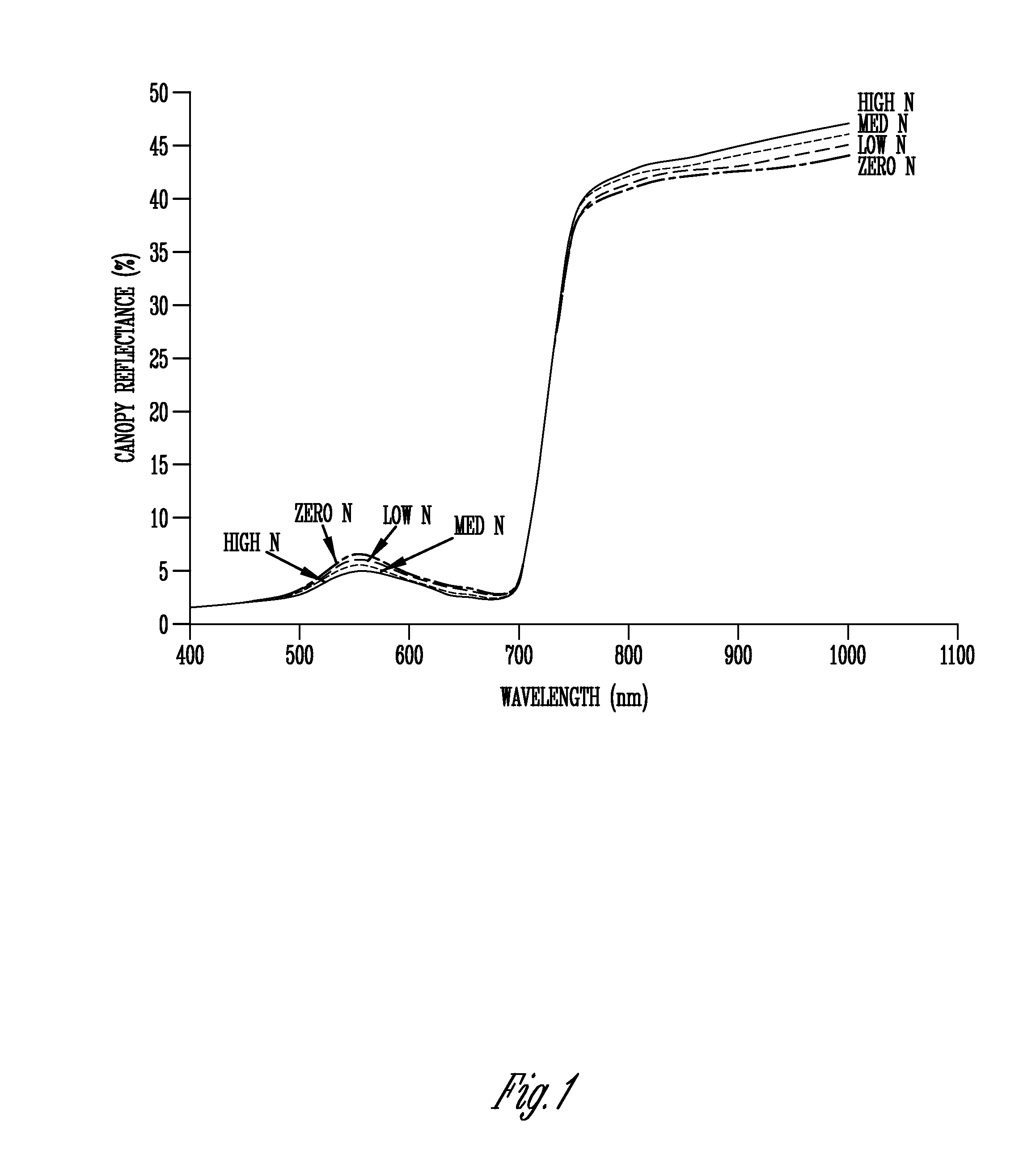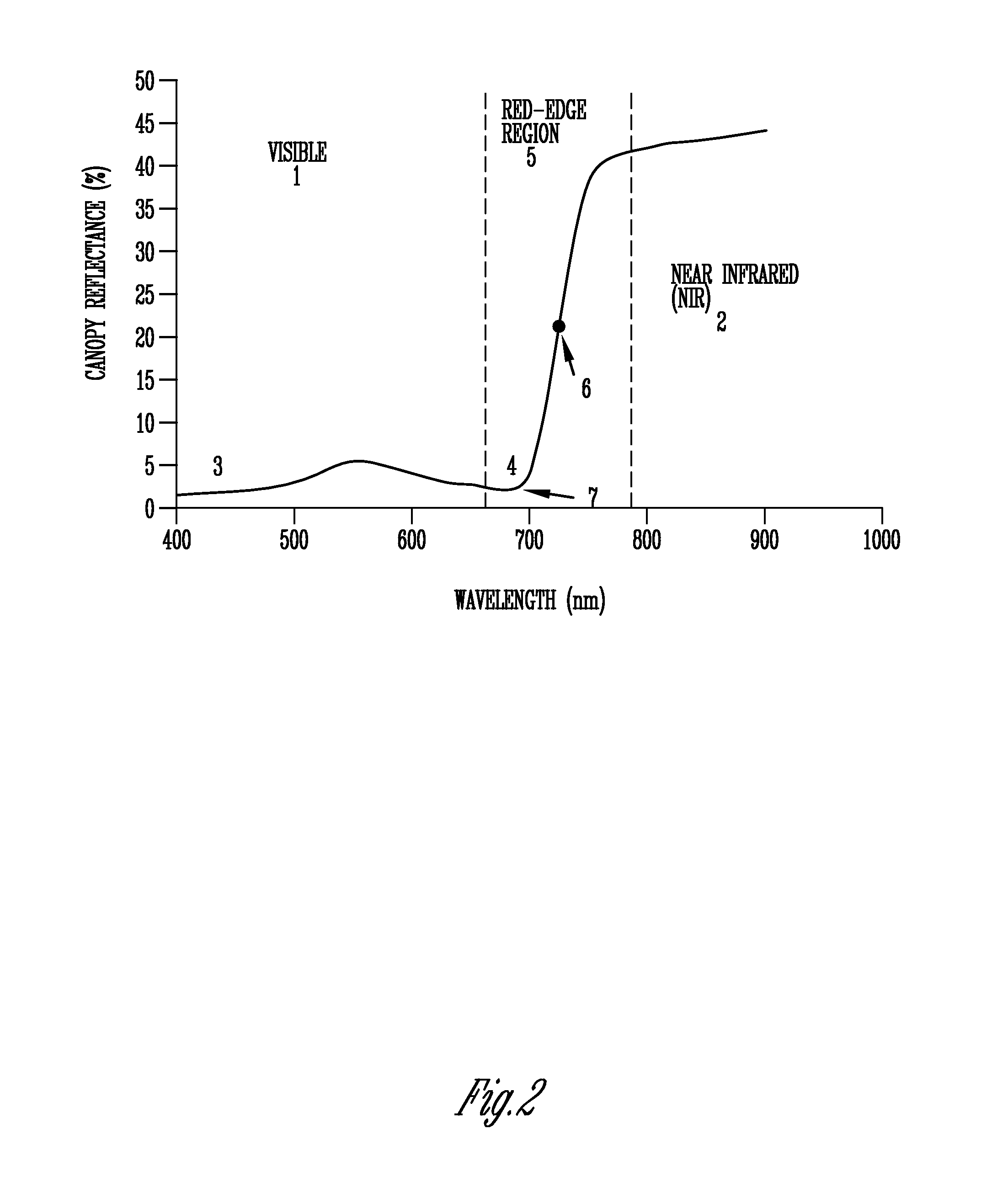Plant treatment based on a water invariant chlorophyll index
a plant treatment and chlorophyll technology, applied in the field of plant treatment based on a water invariant chlorophyll index, can solve the problems of poor spatial resolution of satellite imagery, adverse effects of cloud cover on visibility, and similar problems afflicting aerial photographic methods
- Summary
- Abstract
- Description
- Claims
- Application Information
AI Technical Summary
Benefits of technology
Problems solved by technology
Method used
Image
Examples
Embodiment Construction
[0033]The following contains a description for a sensor that remotely measures plant canopy chlorophyll content independent of soil reflectance and ambient illumination levels. The sensor can be used in stand-alone instrumentation configurations or in a network of sensors mounted to a vehicle or moving apparatus for on-the-go remote sensing applications. The following description of the invention is meant to be illustrative and not limiting. Other embodiments will be obvious in view of this invention.
[0034]The positive relationship between leaf greenness and crop nitrogen (N) status means it should be possible to determine crop N requirements based on reflectance data collected from the crop canopy (Walberg et al., 1982; Girardin et al., 1985; Hinzman et al., 1986; Dwyer et al., 1991) and leaves (McMurtrey et al., 1994), see FIG. 1. Plants with increased levels of N typically have more chlorophyll (Inada, 1965; Rodolfo and Peregrina, 1962; Al-Abbas et al., 1974; Wolfe et al., 1988) ...
PUM
 Login to View More
Login to View More Abstract
Description
Claims
Application Information
 Login to View More
Login to View More - R&D
- Intellectual Property
- Life Sciences
- Materials
- Tech Scout
- Unparalleled Data Quality
- Higher Quality Content
- 60% Fewer Hallucinations
Browse by: Latest US Patents, China's latest patents, Technical Efficacy Thesaurus, Application Domain, Technology Topic, Popular Technical Reports.
© 2025 PatSnap. All rights reserved.Legal|Privacy policy|Modern Slavery Act Transparency Statement|Sitemap|About US| Contact US: help@patsnap.com



